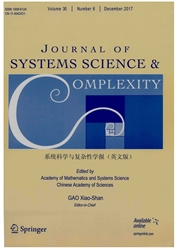

 中文摘要:
中文摘要:
针对供应链的库存耗损问题,基于分散式决策供应链成员是否投资无线射频识别(RFID)技术,构建了供应链成员均不投资RFID(N情景)、仅生产商和一个零售商投资RFID(S情景)以及供应链成员均投资RFID(T情景)下单生产商与两零售商的收益模型,分析了RFID标签成本分摊的方法,并探讨了链上成员RFlD的投资策略.研究发现,生产商采用新批发价格策略或成本分摊系数策略均能有效分摊RFID成本并得到相同的分摊效果,但均无法协调供应链;当零售商耗损率相同时,S和T情景的链上成员承担的RFID成本阈值相同;低耗损率的零售商不会主动投资RFID,高耗损率的零售商将主动并倾向于单独投资RFID.
 英文摘要:
英文摘要:
Aiming at the stock loss of supply chain, a two-stage decentralized supply chain with one manufacturer and two retailers was considered. For the members decision on whether invest Radio Frequency Identification (RFID) or not, the players' profit models were constructed under three scenarios: none of the players adopts RFID (Scenario N), only the manufacturer and one retailer adopt RFID (Scenario S) and all players adopt RFID (Scenario T). The method of RFID tag cost-sharing was analyzed and the RFID investment strategy was discussed. The result showed that the manufacturer who used the new wholesale price contract or the cost-sharing coefficient contract could both share RFID cost effectively and get the same result, but could not coordinate the supply chain. When the retailers had the same shrinkage rates, the same RFID cost thresholds existed with the players of supply chain in scenarios S and T. The retailer with lower shrinkage rate would not initiative adopt RFID, while the retailer with higher shrink- age rate would initiative adopt RFID and prefer for scenario S.
 同期刊论文项目
同期刊论文项目
 同项目期刊论文
同项目期刊论文
 Is technical analysis informative in UK stock market? Evidence from decomposition-based vector autor
Is technical analysis informative in UK stock market? Evidence from decomposition-based vector autor Competition with online and offline demands considering logistics costs based on the hotelling model
Competition with online and offline demands considering logistics costs based on the hotelling model An immune co-evolutionary algorithm based approach for problems related to clothing uniform assignme
An immune co-evolutionary algorithm based approach for problems related to clothing uniform assignme Application of machine learning methods to risk assessment of financial statement fraud: Evidence fr
Application of machine learning methods to risk assessment of financial statement fraud: Evidence fr A resource allocation model of logistics services supply chain for Multi-Agent based on ant colony a
A resource allocation model of logistics services supply chain for Multi-Agent based on ant colony a Berth Allocation Problem with Quay Crane Assignment for Container Terminals Based on Rolling-Horizon
Berth Allocation Problem with Quay Crane Assignment for Container Terminals Based on Rolling-Horizon Heuristics for solving continuous berth allocation problem considering periodic balancing utilizatio
Heuristics for solving continuous berth allocation problem considering periodic balancing utilizatio A novel ensemble learning approach for corporate financial distress forecasting in fashion and texti
A novel ensemble learning approach for corporate financial distress forecasting in fashion and texti An analysis on the sensitivity of steel production cost to iron ore price and some enlightenments fo
An analysis on the sensitivity of steel production cost to iron ore price and some enlightenments fo 期刊信息
期刊信息
